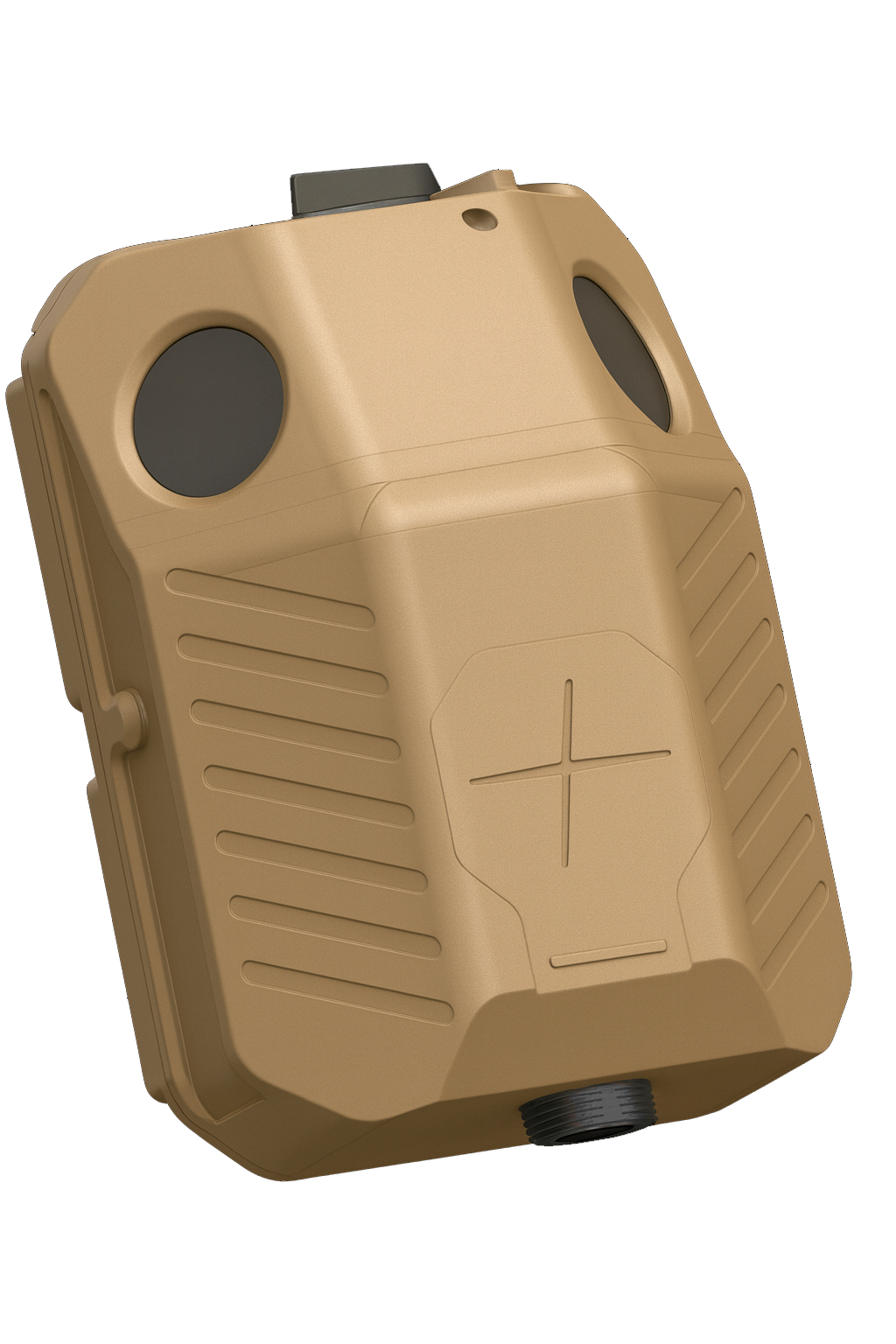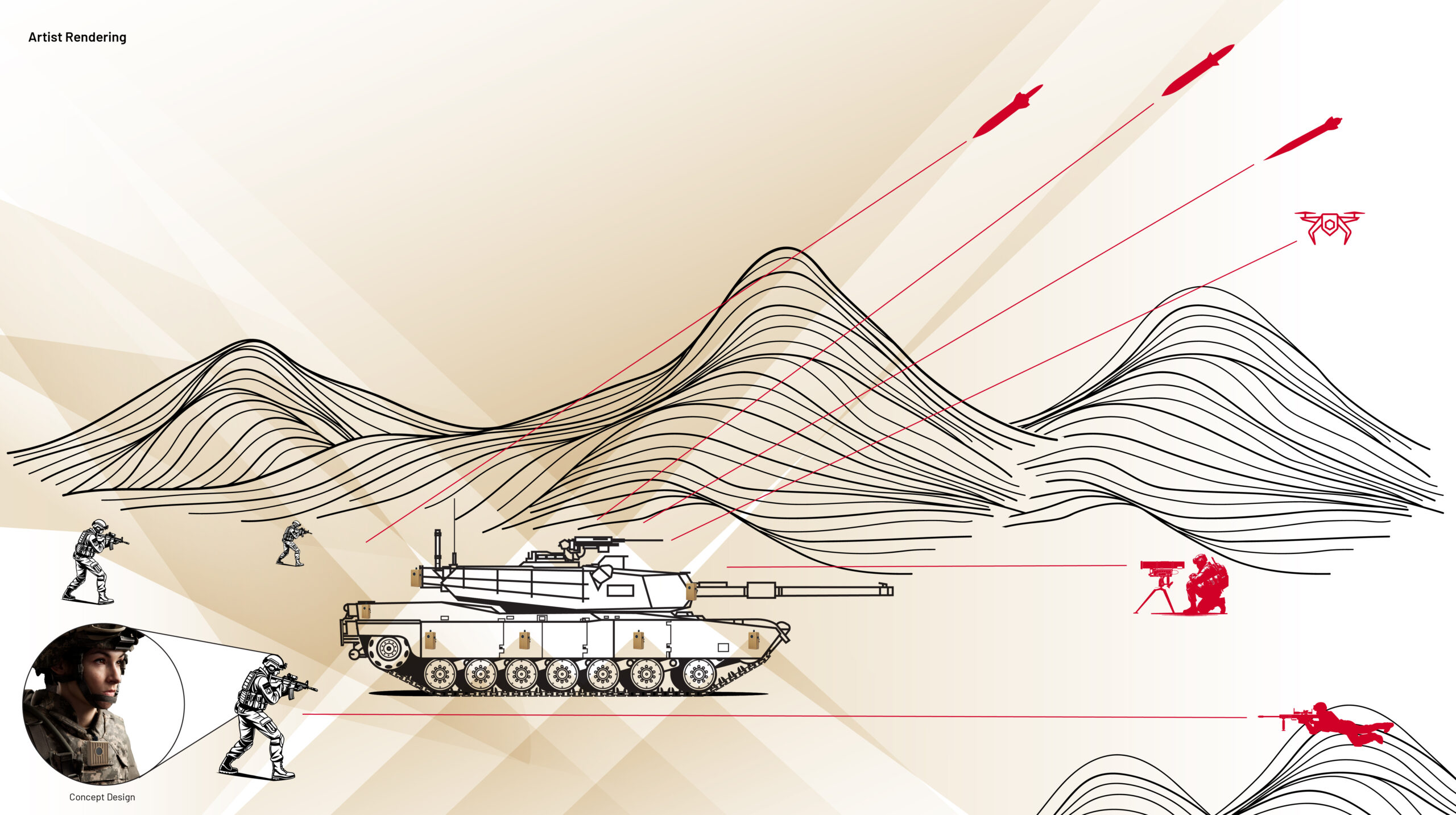Next Generation BLDS (Battlefield Laser Detection System)

Engineered for Precision, Built to Protect
Next Generation BLDS (Battlefield Laser Detection System) empowers military operators with the speed and situational awareness required to survive and dominate in a laser-threat environment. Whether on foot or in a vehicle, soldiers equipped with Next Generation BLDS gain a decisive edge through early warning, threat identification, and integration with the broader tactical network.
Read our whitepaperEnhanced situational awareness and survivability

Laser-enabled threats—such as Laser Rangefinders, Laser Target Designators, and Beamrider Missiles—are increasingly present across modern battlefields. These systems pose significant risks to personnel, vehicles, and critical infrastructure.
To address this evolving threat landscape, KWESST Inc. has developed the Next Generation BLDS (Battlefield Laser Detection System). This advanced sensor provides real-time alerts on the presence, location, and type of laser threats, enhancing operator survivability and enabling future capabilities such as automated threat classification and coordinated response.
Crucially, the Next Generation BLDS is designed to be low-cost, fully consumable, and maintenance-free—making it ideally suited for scalable deployment across dismounted forces, vehicles, and fixed installations. Its affordability and ease of use ensure sustained readiness and operational flexibility in high-threat environments.
Key Benefits
- Unmatched Accuracy - Captures subtle laser threats with precision.
- Interference-Free - Filters distractions for reliable alerts.
- Ultra-Sensitive Detection - Detects fleeting signals instantaneously.
- Immediate Feedback - 300ms audible alert gives operators instant overmatch.
- Power Versatility - Supports Nett Warrior systems (10-17 VDC).
Why choose BLDS Sensor technology
- Speed and Precision - Instant, actionable intelligence.
- Reliability - No false positives, only real threats.
- Flexibility - Adapts to all mission needs.
Applications
- Personnel Safety - Real-time warnings save lives.
- Defends Assets - Protects vehicles and command posts.
- All-Domain Protection - Protects across air, land, and sea.
- Infrastructure - Protects bases, buildings and critical sites.
Upcoming Roadmap Enhancements
- Networking - Onboard processing and integration with ATAK-based platoon connectivity.
- Vehicle Integration - Connects to battle management and active protection systems.
- Threat Insights - Pairs with DEFSEC Technologies proven threat-classification technology for real-time response tailoring.
Technical Specifications
- Sensitivity Rating - Detects photocurrents as low as tens of µA.
- Pulse Range - Captures 30 ns to 1 ms signals.
- Threshold - Alerts at 5 mV above noise.
- Power - 10-17 VDC, ~2W, Nett Warrior-compatible (6-pin connector, Glenair 808-274 cable).
- Battery - Proven with Nerv Centr SoloPack (Galvion).
- Range - Proven detection of Class 1 & 3R lasers at ≥2 km (900–1550 nm).
- Size – 84mm (w) x 122mm (h) x 41mm (d)
- Weight – 250g

